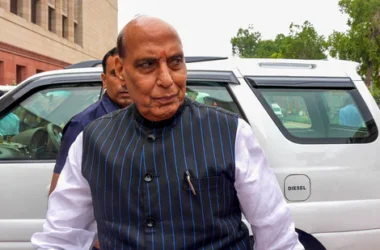
The Reserve Bank of India (RBI) has recently unveiled preliminary data on India’s Balance of Payments (BoP) for the first quarter (Q1) of the fiscal year 2023-24, covering the period from April to June. The data provides valuable insights into India’s economic position on the global stage, highlighting some noteworthy developments.
One of the most significant features of India’s BoP in Q1 2023-24 is the substantial reduction in the Current Account Deficit (CAD). The CAD shrank to $9.2 billion, equivalent to 1.1 per cent of GDP, representing a notable improvement from $17.9 billion, or 2.1 per cent of GDP, recorded in the same quarter of the previous fiscal year (Q1: 2022-23). However, it was higher than the CAD reported in the preceding quarter, which stood at $1.3 billion (0.2 per cent of GDP). The expansion of the CAD on a quarter-on-quarter basis can be attributed to several factors, including a higher trade deficit, a decrease in the surplus of net services, and a decline in private transfer receipts.
In more detail, the widening of the CAD was primarily influenced by:
- Trade Deficit: An increased trade deficit contributed significantly to the CAD’s expansion. This was partly driven by factors such as rising commodity prices and fluctuations in international trade dynamics.
- Net Services: The surplus of net services witnessed a sequential decline in Q1: 2023-24, mainly due to reduced exports of computer services, travel, and business services. Nevertheless, it’s important to note that these receipts remained higher when compared year-on-year.
- Private Transfer Receipts: These primarily consist of remittances sent by Indians employed overseas. In Q1: 2023-24, they moderated to $27.1 billion from $28.6 billion in the previous quarter (Q4: 2022-23). However, they experienced growth when viewed on a year-on-year basis.
The income account, which reflects payments of investment income, also showed a decrease, falling to $10.6 billion in Q1: 2023-24 from $12.6 billion in Q4: 2022-23. Nevertheless, this figure remained higher compared to the previous year.
In the financial account, several notable changes were observed:
- Net Foreign Direct Investment (FDI): It decreased to $5.1 billion in Q1: 2023-24 from $13.4 billion a year ago.
- Net Foreign Portfolio Investment: This category recorded significant inflows of $15.7 billion, in stark contrast to net outflows of $14.6 billion in Q1: 2022-23.
- Net External Commercial Borrowings: India experienced an inflow of $5.6 billion in Q1: 2023-24, a significant shift from the outflow of $2.9 billion observed in the previous year.
- Non-Resident Deposits: Net inflows of $2.2 billion were recorded in Q1: 2023-24, demonstrating substantial growth compared to $0.3 billion in Q1: 2022-23.
By the end of June 2023, India’s external debt had reached $629.1 billion, indicating an increase of $4.7 billion from its level at the end of March 2023.
The data from RBI’s Balance of Payments report for Q1: 2023-24 reflects the dynamic nature of India’s economic landscape. Despite fluctuations, the narrowing of the current account deficit and increased foreign investment inflows are positive indicators for India’s global economic engagements. Analysts and policymakers will closely monitor these trends as they have significant implications for India’s overall economic stability and prospects in the upcoming fiscal year.










